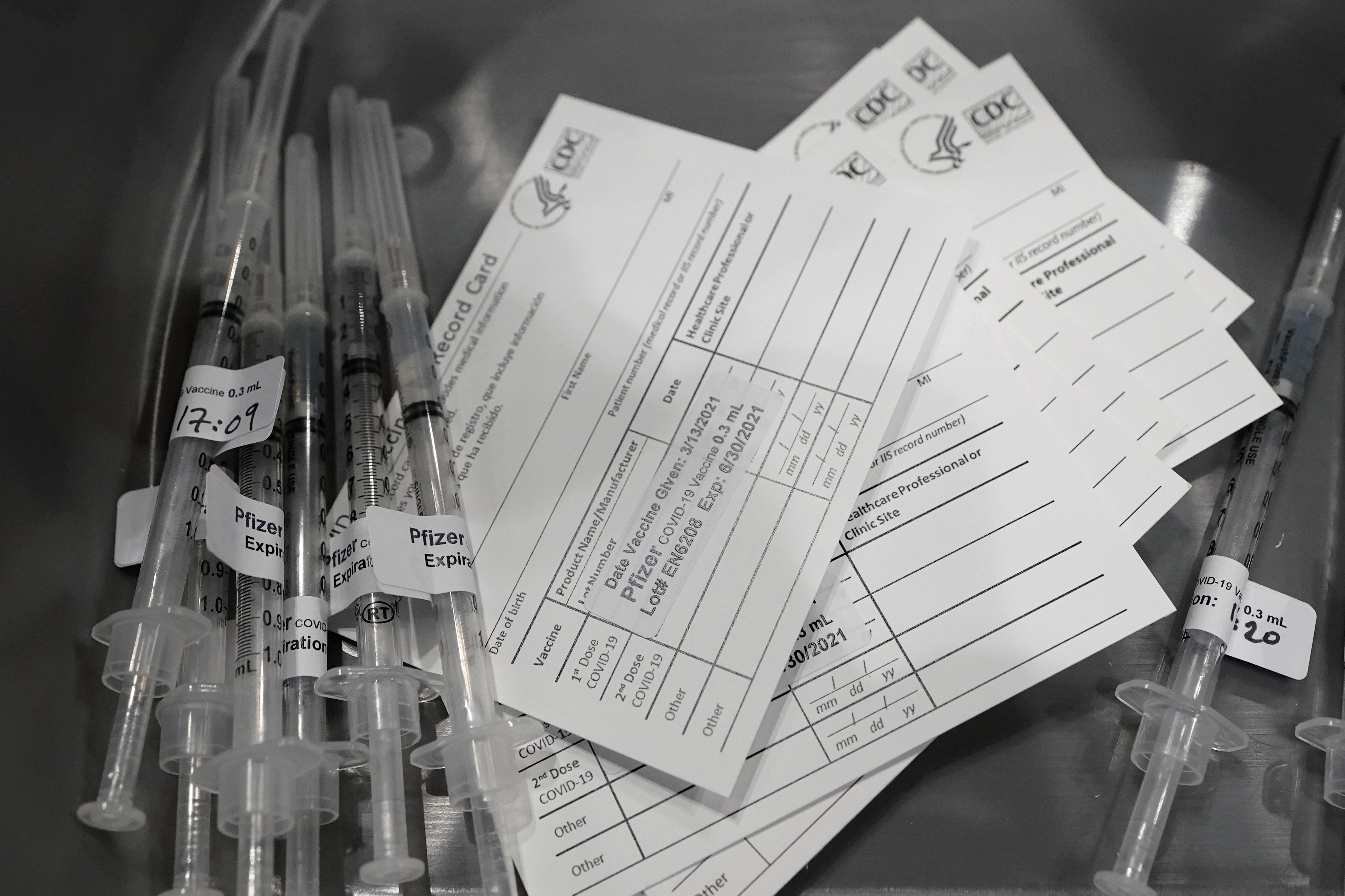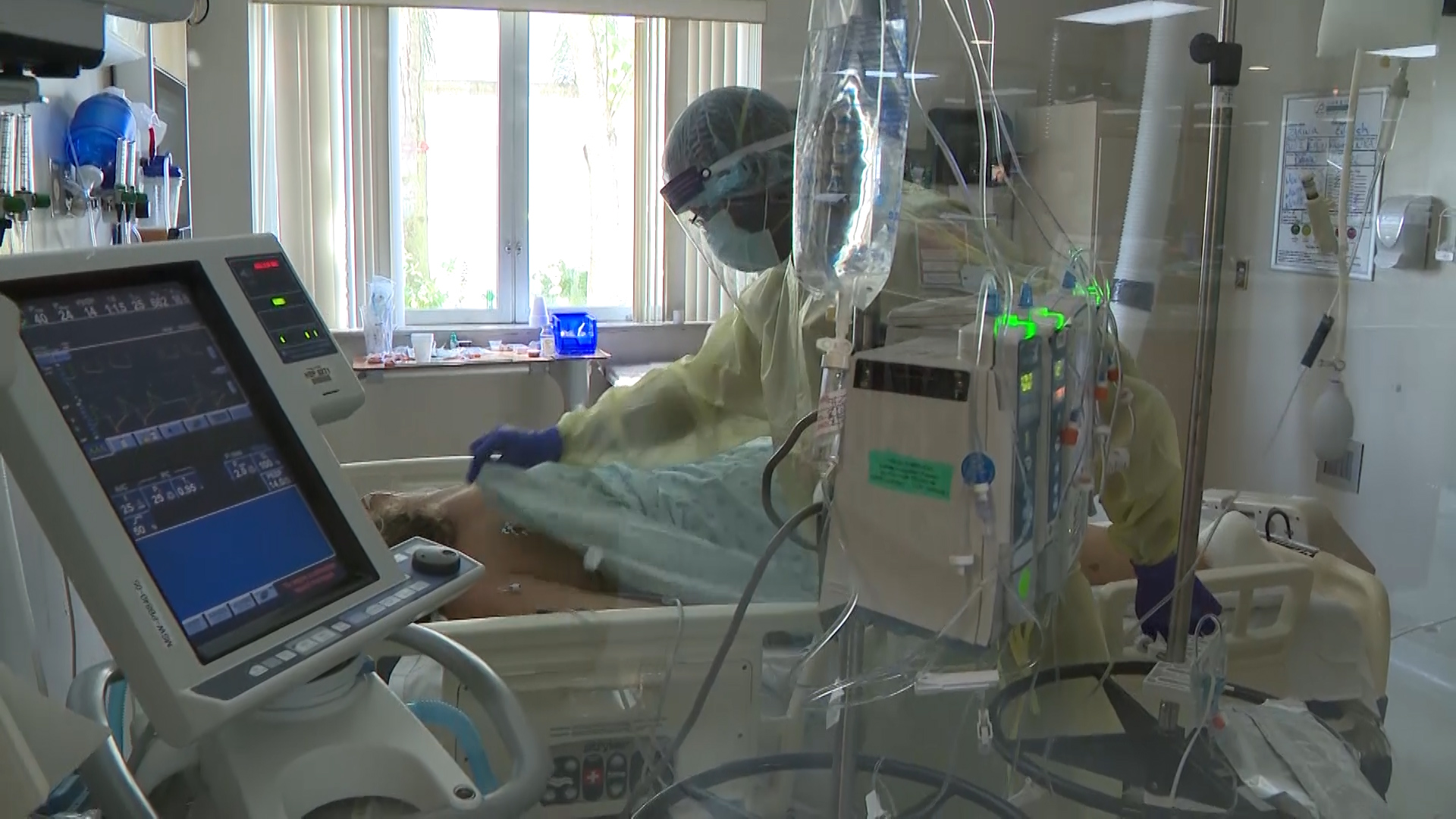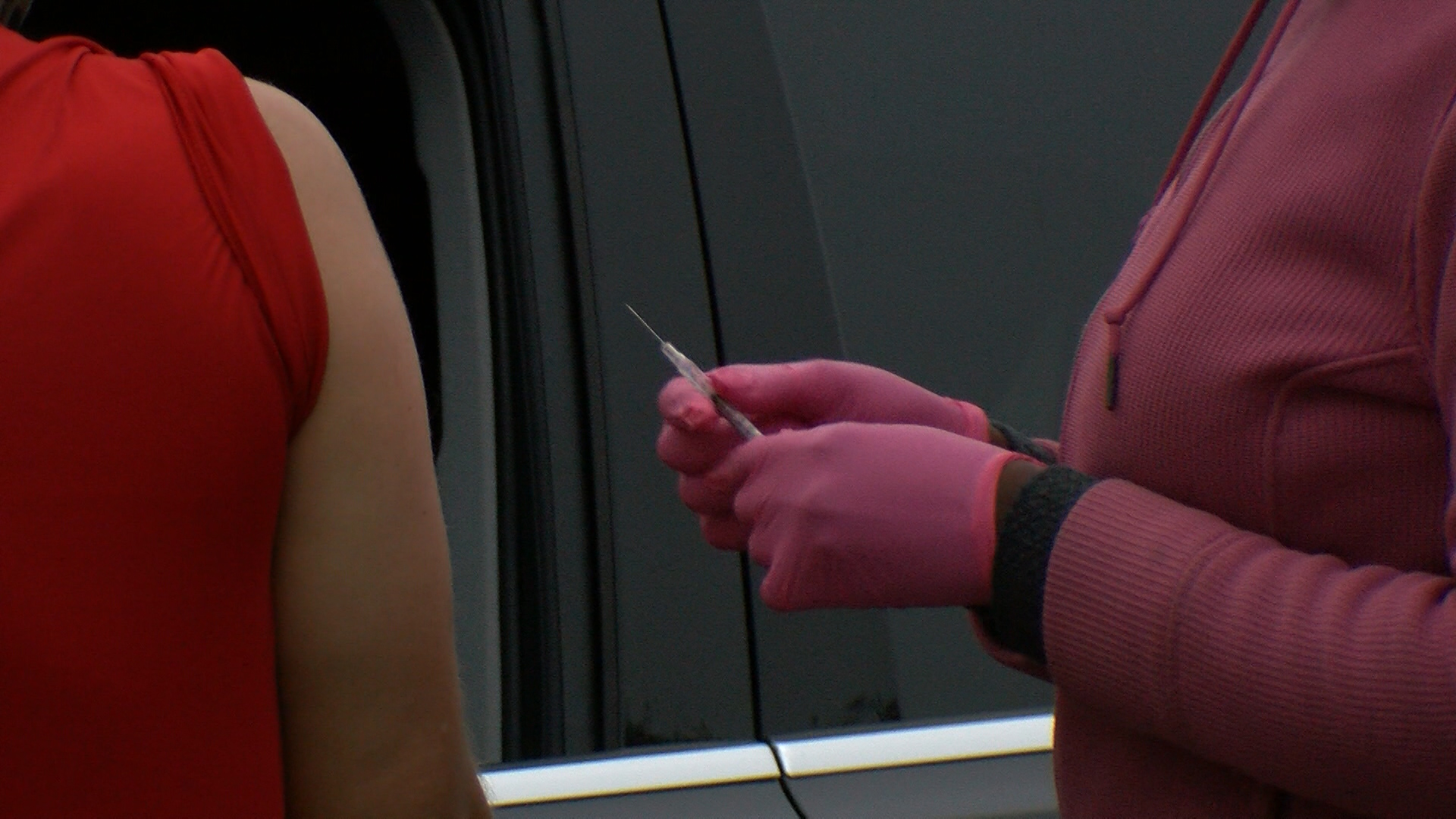WASHINGTON (AP) — Nursing home residents vaccinated against COVID-19 can get hugs again from their loved ones, and all residents may enjoy more indoor visits, the government said Wednesday in a step toward pre-pandemic normalcy.
The policy guidance from the Centers for Medicare and Medicaid Services, or CMS, comes as coronavirus cases and deaths among nursing home residents have plummeted in recent weeks at the same time that vaccination accelerated. People living in long-term care facilities have borne a cruel toll from the pandemic. They represent about 1% of the U.S. population, but account for 1 in 3 deaths, according to the COVID Tracking Project.
Government officials acknowledged that isolation deepened the misery for residents as long-term care facilities remained locked down much of last year. Loneliness contributed to physical as well as mental decline. The ban on visits went into effect almost one year ago and only in the fall were facilities allowed to begin socially distanced outdoor visits and limited indoor ones.
“There is no substitute for physical contact, such as the warm embrace between a resident and their loved one,” CMS said in its new guidance, “Therefore, if the resident is fully vaccinated, they can choose to have close contact (including touch) with their visitor while wearing a well-fitting face mask and performing hand-hygiene before and after.”
So while hugs are OK again for residents who have completed their vaccination, precautions such as wearing masks and using hand sanitizer remain in place as a counterbalance to risk. CMS also underscored that maintaining 6 feet of separation is still the safest policy, and outdoor visits are preferable even when residents and visitors have been vaccinated.
“All of us feel enormous relief that we are at this next juncture and feel confident that reopening visitation can be achieved safely, given all we have learned during the pandemic,” said Terry Fulmer, president of the John A. Hartford Foundation, which works to improve care for older adults. “A great deal more has been learned about infection control, and families and facilities are ready.”
Before the pandemic, there was a lot of flexibility when visiting a loved one living in a nursing home or getting rehab care in one. Family members came and went at different hours of the day. Spouses were able to spend the day together, even if one of them was confined to a nursing home. But at the height of the crisis, the closest that friends and family could get was waving on the other side of an exterior window.
The CMS guidance moves back in the pre-COVID-19 direction, saying that nursing homes “should allow indoor visitation at all times and for all residents, regardless of vaccination status.” Several exceptions are flagged, such as when a resident is known to be infected or in quarantine.
“Now that millions of vaccines have been administered to nursing home residents and staff, and the number of COVID cases in nursing homes has dropped significantly, CMS is updating its visitation guidance to bring more families together safely,” Dr. Lee Fleisher, a senior agency medical officer, said in a statement.
Under the new guidance, homes in counties with high rates of COVID-19 can still have indoor visits, provided they take precautions. When an outbreak occurs at a facility, it doesn’t have to go on lockdown for 14 days. Visits can still happen as long as the outbreak is isolated to an area or unit of the facility.
Compassionate care visits should be allowed at all times, the guidance said, even if there’s an outbreak or a resident is unvaccinated. The term “compassionate care” doesn’t refer just to situations when a resident is near death, but also encompasses circumstances in which a patient is having trouble adjusting.
CMS is also urging nursing homes to consider scheduling visits and using time limits. Visitors should be encouraged to get vaccinated as soon as possible.
The nursing home industry says it’s prepared.
“This is the right thing to do,” said Katie Smith Sloan, president of LeadingAge, which represents nonprofit facilities. “Federal policy now reflects the real progress that has been made in vaccinating nursing home residents and staff.”
Figures from the Centers for Disease Control and Prevention show that nursing home cases peaked around the end of December and then declined sharply, particularly since the middle of January. Deaths among residents fell from 7,049 the week ending Dec. 20 to 1,350 the week ending Feb. 28.











